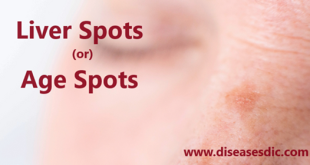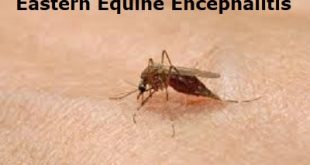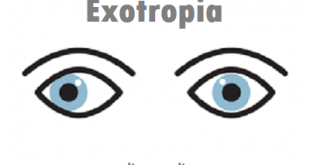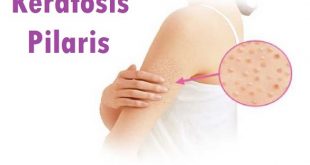Definition
Erythema multiforme (EM) is typically an acute, self-limited but often relapsing, mucocutaneous inflammatory condition. This condition is considered to be an allergic reaction to medicine or an infection. Symptoms are symmetrical, red, raised skin areas that can appear all over the body. They do seem to be more noticeable on the fingers and toes. These patches often look like “targets” (dark circles with purple-grey centers). The skin condition may happen over and over again and usually lasts for 2 to 4 weeks each time.
Erythema multiforme
Most often, this disorder is caused by the herpes simplex virus. It has also been associated with Mycoplasma pneumonia as well as fungal infections. Other causes may include the following:
- An interaction with a certain medicine
- Other infectious diseases
- Certain vaccines
Epidemiology
There is no register or valid estimate of the number of cases of EM; however, it may represent 1% of dermatology outpatient attendance. Males are affected slightly more often than females. Most patients are aged under 40 with 20% occurring in children and adolescents.
Types of erythema multiforme
Erythema multiforme minor
EM minor as the name suggests is the less severe of the two types and accounts for 80% of EM. The rash appears over a few days, however, in some patients, several crops follow each other during one attack. There may be minor burning or itch. It is most intense over the backs of the hands and feet. There is usually round “bulls-eye” target shaped rings on the palms. In severe cases, some blisters may be present both on the skin and lips. The rash lasts for 1 to 2 weeks and then recedes leaving residual brown pigmentation.
Erythema multiforme minor
Erythema multiforme major (Stevens-Johnson syndrome)
In erythema multiforme major the degree of damage is greater than in EM minor. In 5% to 15% of the cases, it results in death, although this number has probably come down with modern treatments. There are some large blood blisters, along with the red rash. The lips eyes and other moist surfaces are more severely affected and occasionally the internal organs. Pain interferes with eating and going to the bathroom.
Erythema multiforme major
Risk factors
Some of the risk factors of Erythema Multiforme may include:
- Infections are one of the most common risk factors of Erythema Multiforme. The most common infections implicated are herpes simplex virus, mycoplasma, Epstein-Barr virus, adenovirus, streptococci, and many other pathogens
- Medications that increase one’s risk EM include sulfonamides antibiotics, many medications used for epileptic fits, such as carbamazepine, penicillin group of antibiotics, etc.
- Other clinical situations which can increase one’s risk include pregnancy, cancer, collagen diseases, exposure to substances such as poison ivy and nickel
- The male gender and children are at a slightly increased risk than other individuals
- Certain individuals possess factors on a molecular or cellular level that increases one’s susceptibility to EM. These factors include HLAB12, HLADQ3, etc.
Causes of erythema multiforme
Although the exact cause is not known there are many different things that they feel can cause a person to have erythema multiforme. When a person has this medical condition it could start with damage to the blood vessels of your skin. The main two causes are having an infection or an allergic rash.
Some of the medications that can cause this type of reaction include:
- Penicillin
- Barbiturates
- Sulfonamides
- Phenytoin
Some of the infections that can cause erythema multiforme are:
- Mycoplasma
- Herpes simplex either genital or oral
If a person has the “minor” form it is usually caused by an infection. If they have the “major” form is usually caused by the reaction to medication.
Symptoms
- Itching or burning sensation on the site of the rash
- Numerous red-pink maculopapular rash that begins on the extremities then may proceed to the torso
- Sharply demarcated pink to red rash
- Presence of a target like lesion (also called “iris” lesion)
- Presence of plaques
- Plaques or papules that have a darker, brown, purpuric, center (happens at the late stages of the condition)
- Presence of blisters and crusting on the center of the lesion may also be noted.
- Presence of mucosal lesions especially in the mouth
Lesions on all over the body
Other Signs and Symptoms may include:
- Fever
- Muscle pain
- Body malaise or weakness
- A cough or a sore throat
- Joint pain
Complications of erythema multiforme
In severe cases, possible complications can include:
- Blood poisoning (septicemia)
- Septic shock (where blood pressure drops to a dangerously low level)
- A skin infection (cellulitis)
- Permanent skin damage and scarring
- Permanent eye damage
- Inflammation of internal organs, such as the lungs or liver
Diagnosis and test
Clinical Assessment
A simple assessment of the patient for the presence of target lesions is enough to diagnose erythema multiforme. Further strengthening the diagnosis is the presence of an HSV infection
Skin Biopsy
This is done when the clinical manifestations are not clear. For patients with recurring erythema multiforme or for those with no history of HSV infection, a skin biopsy may be done.
Laboratory Tests
Laboratory tests such as Immunoglobulin M and G, HSV-1 and 2 may also be done if the clinical presentation is unclear.
Erythema Multiforme Differential Diagnosis
Many conditions also resemble the clinical presentation of erythema multiforme. Differential diagnosis is important to rule out other forms of condition from erythema multiforme. Differential diagnoses for this condition include the following:
- Urticarial and urticarial vacuities
- Vasculitis
- Viral exanthems such as measles
- Polymorphic light eruption
- Lupus erythematosus
- Pityriasis rosea
- Steven-Johnson’s syndrome
- Drug eruption
- Toxic Epidermal Necrolysis
It is important for the physician to take note of the distinguishing characteristics of erythema multiforme. This condition is usually fixed and present for at least one week, and lesions have the characteristic “iris” appearance or the so-called “target-like” lesions. Other lesions only emerge for less than 24 hours (urticaria) and do not resemble the target appearance of erythema multiforme.
Treatment and medications
For the majority of cases, no treatment is required, as the rash settles by itself over several weeks without complications.
Treatment directed to any possible cause may be required such as oral aciclovir (not topical) for HSV or antibiotics (eg, erythromycin) for Mycoplasma pneumoniae. If a drug cause is suspected then the possible offending drug should be ceased.
Supportive/symptomatic treatment may be necessary.
- Itch – oral antihistamines and/or topical corticosteroids may help.
- Oral pain – mouthwashes containing a local anesthetic and antiseptic reduce pain and secondary infection.
- Eye involvement should be assessed and treated by an ophthalmologist.
- Erythema multiforme major may require hospital admission for supportive care, particularly if severe oral involvement restricts drinking.
The role of oral corticosteroids remains controversial, as no controlled studies have shown any benefit. However for severe disease 0.5–1 mg/kg/d prednis(ol)one is often used early in the disease process.
Recurrent erythema multiforme is usually treated initially with continuous oral aciclovir for 6 months at a dose of 10 mg/kg/d in divided doses (eg, 400 mg twice daily), even if HSV has not been an obvious trigger for the patient’s erythema multiforme. However, erythema multiforme may recur when the aciclovir is ceased. Other antiviral drugs such as valciclovir (500–1000 mg/d) and famciclovir (250 mg twice daily) should be tried if aciclovir has not helped.
Other treatments (used continuously) that have been reported to help suppress recurrent erythema multiforme include:
- Dapsone 100–150 mg/day
- Antimalarial drugs (eg, hydroxychloroquine)
- Azathioprine 100–150 mg/day
Others: Thalidomide, ciclosporin, mycophenolate mofetil, photochemotherapy (PUVA)
Prevention of erythema multiforme
The preventative measures of Erythema Multiforme could include:
- In certain individuals, the condition may be prevented by avoiding substances that trigger EM. For example, by not taking sulfonamides for infections, but rather choosing a different class of antibiotics
- Treating underlying diseases or conditions that trigger EM
- In some individuals, prophylactic antiviral medications (medications taken before the condition sets in) may help prevent herpes simplex infections from occurring, or from progressing further
- In individuals with EM, good hygiene and staying away from those who are ill can help to prevent secondary infections from taking place
Note: Not all cases of Erythema Multiforme (EM) can be prevented, especially if the offending agent is not apparent or remains unknown.
 Diseases Treatments Dictionary This is complete solution to read all diseases treatments Which covers Prevention, Causes, Symptoms, Medical Terms, Drugs, Prescription, Natural Remedies with cures and Treatments. Most of the common diseases were listed in names, split with categories.
Diseases Treatments Dictionary This is complete solution to read all diseases treatments Which covers Prevention, Causes, Symptoms, Medical Terms, Drugs, Prescription, Natural Remedies with cures and Treatments. Most of the common diseases were listed in names, split with categories.








biology is a course of natural science which I see great pleasure in doing it to the best of my ability.
sir can you give me information about splenomegaly management or treatment
Very soon we will update in our app. keep reading our app.
It’s very useful
???
very nice
Thanx a lot for this app. It’s very informative well detailed